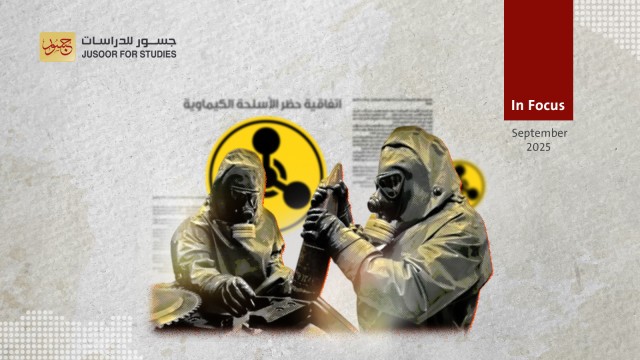Turkish pinpoint operations in Syria against the PKK: Details and indications
More than two months have passed since Türkiye launched the "claw-sword" military air operation against the PKK and the Syrian Democratic Forces (SDF). Obviously, the level of escalation decreased 3 weeks after its announcement, which was on November 19, 2022.
However, since the beginning of 2023, Türkiye started launching special operations in Syria in a different style; where the nature and locations of the targets have clearly changed as the following:
- On January 3, the Turkish intelligence service in a security operation in Al-Hasakah, killed Zeki Gürbüz, who went by the code-name "Ahmet Şoreş" and Özgür Namoğlu, nicknamed as Firat Nawal; where their homes were targeted in the village of "Tal Taweel Marsho" located at the northern entrance to the city of Al-Hasakah. The two targeted persons are officials of the FESK organization, the armed wing of the Turkish Communist Party - Marxist-Leninist TKP-ML, which is an organization banned in Türkiye and allied with the PKK. The above-mentioned individuals are also involved in coordinating and carrying out operations inside Türkiye, the most important of which was the targeting of the bus belonging to Bursa prison on April 20, 2022, and missile attacks launched by the organization from the areas controlled by the SDF, targeting the Turkish territories.
- On January 11, two leaders of the Kurdistan Workers' Party (PKK) were killed, whose identities are still unknown. This came a result of an attack, it is likely that carried out by Turkish drones to bomb the car, in which they were travelling; as it passed near the Al-Jazeera station on the international "Qamishli-Al-Hasakah" road. The location of this strike is only 8 km from the first one.
- On January 18, at least two leaders of the Kurdistan Workers' Party (PKK) were killed without announcing their identities; where media outlets affiliated with the Democratic Union Party (PYD) contented themselves with saying: The Turkish drones targeted the car that was carrying them while it was passing near a gas station at the junction of the village of Ma’shouq on the road linking Qamishli and Al-Malikiyah/Derik, east of Al-Hasakah.
- On January 19, an explosion occurred, as SDF said: It was caused by a drone strike - within one of the military points on the outskirts of the oil city of Rmeilan, in which the leadership of the US-led International Coalition in Syria is located, and a number of first-rank leaders of the PKK are stationed. These leaders are assigned by the coalition to help administrate the SDF-controlled areas, which also said: The explosion targeted one of the points of its "Military Relations Office", which is responsible for coordinating meetings with the international coalition forces.
It is noted from all the operations that they were conducted in the depth of the SDF-controlled areas, more than 60 km south of the “Syrian-Turkish” border, which is a significant change in the usual scope where the Turkish operations used to be carried out, which were usually concentrated within a depth of 30 km south of the border. Such a development indicates a significant shift in the nature of the targeted personalities involved in terrorist acts launched from SDF-controlled areas outside Syria and inside Türkiye in particular. The unusual disregard of the SDF and the PYD media outlets for most of these operations and referring to them only as explosions of unknown cause and source, despite the Turkish Communist Party announced the records of its two leaders who were killed in one of these operations.
Türkiye has not announced the methods and mechanism for carrying out these operations. However, according to the data and information available about them, the following can be said:
- Türkiye has resorted to carrying out pinpoint operations targeting the personalities and sites responsible for the direct threat to Ankar’as national security, as a temporary alternative, at least, to the ground military operation in the SDF-controlled areas.
- The locations of the operations and the way, with which the SDF and the Democratic Union Party’s are responding lead to a perception that there is high security and intelligence coordination between Türkiye and the United States, in response to Ankara’s demands to neutralize specific lists of leaders and cadres of the organizations deployed within the areas of SDF control, which Türkiye classifies as terrorist organizations.
- The timing of the operations coinciding with Russia's efforts to restore relations between Türkiye and the Syrian regime leads us to believe that there is a kind of security and intelligence cooperation and coordination between Russia and Türkiye to launch specific strikes, as a helping tool to push and support rapprochement efforts; especially since Moscow has many military bases and points in the areas close to the targeting sites, and it conducts permanent patrols in these areas, let aside the regime’s military and security forces presence over there.
All in all, the continuation of operations as such with the same response come from the SDF and the PYD will often lead to the assassination and neutralization of an active current of the PKK cadres and the rest of its affiliated organizations in the SDF-controlled areas. This may lead to the emergence of tension or congestion between these organizations on the one hand, and the SDF and the PYD on the other; especially if the pace of operations increase and the quality of their targets go further in targeting figures linked to the SDF or working with it directly.








